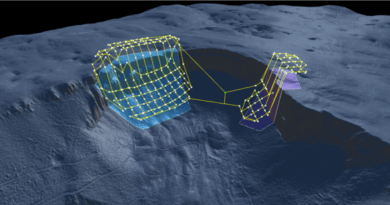Are 3D Printed Drones the Next Big Thing?
Drones
are quickly changing from being classified as toys to becoming integral tools
for many industries, but industrial versions are still costly. Each component
needs to be both strong and lightweight, and shifting designs make it
challenging for manufacturers to keep up with industry demands. The
implementation of 3D printing and CNC machining in the drone industry might be
the next big thing that will change the sector.
Reducing Costs
We’ve
all seen the miniature drones that have become popular as toys and photography
tools in recent years. They have limited flight time and can only carry a
lightweight camera. They’re fairly affordable, with small models costing less
than $50, but they’re not capable of commercial applications. Those industrial
drones have been out of reach for most businesses because they’re exorbitantly
expensive.
3D
printing is making itself known in nearly every industry, and household
printers are becoming more affordable every year. Experts estimate that by
2030, the sector will sell more than 100
million 3D printers, and upwards of 70% of companies
are increasing their investments in this technology.
3D
printing may change that by giving businesses and consumers the tools to build
their own commercial drones for a fraction of the cost — as long as they
already have access to a 3D printer.
Build Your Own Drone
Designing,
prototyping and building a drone is a traditionally challenging task. It
requires days or weeks of research and development, design, construction and
testing before the drone is ready to take flight. 3D printing and CNC machining
give businesses and consumers the tools to create their own drones in a matter
of days. One such example took less than 30
hours total,
and the majority of that time was spent on things like waiting for 3D printed
parts to finish forming.
You
can purchase a premade commercial drone kit, or — if you’re skilled in
electrical engineering — you can create custom electronic components to meet
your design’s needs.
For
applications like these — whether you’re buying pre-made or fabricating your
own electronics — you need to make sure your components are properly shielded
to protect them from weather, moisture and impact damage that could send your
drone crashing down. G10/FR4, for example, has a tensile strength
of 35,000 to 40,000 psi and a compressive strength of 35,000 to 60,000 psi. This tensile and
compressive strength makes it ideal for shielding your electronics while still
being easy to die-cut or feed through your CNC machine.
Switching
to 3D printing isn’t just useful for individuals looking to build a commercial
drone for a fraction of the cost. It’s beneficial for companies, too.
Aerialtronics, a drone startup based in the Netherlands, is a small company
with only 35 employees. By switching to 3D printed drone parts — and managing
its own printers in-house — the company has managed to cut R&D time
in half. It
feeds CAD designs directly into the 3D printer, lowering costs and improving
the overall applications for the technology.
Benefits of Using Drones
Why are companies looking toward drones as a tool to help them run their business? Once these commercial devices become more affordable, the potential uses are limitless. Amazon and other retail outlets have been exploring using drones for last-mile deliveries, though they are still trying to work out the kinks of dealing with the FAA. Emergency services can use drones equipped with GPS technology to reach accident and emergency sites long before police or fire vehicles can. In construction, drones can inspect job sites, check that safety rules are being followed and even survey undeveloped property without needing a helicopter.
As
they become more affordable, drones will be an invaluable tool in nearly every
industry. The move toward 3D printing is the first step in making commercial
drones more accessible for the average business owner or hobbyist.
Looking Toward the Future
Drones
are proving to be useful tools in nearly every industry, from agriculture to
construction and everything in between. 3D printing and CNC milling are
emerging as ways to reduce the costs of industrial drones, making them more affordable
for all interested parties.
- Are 3D Printed Drones the Next Big Thing? – November 11, 2019
- 5 Trends Impacting the Commercial Drone Industry – July 27, 2019
- Do Drones Have a Place in Manufacturing? – April 26, 2019
- Here’s How You Can Implement Drones Into Commercial Operations – January 26, 2019
- Here’s How Drones Reduce Costs in the Energy Sector – September 18, 2018



